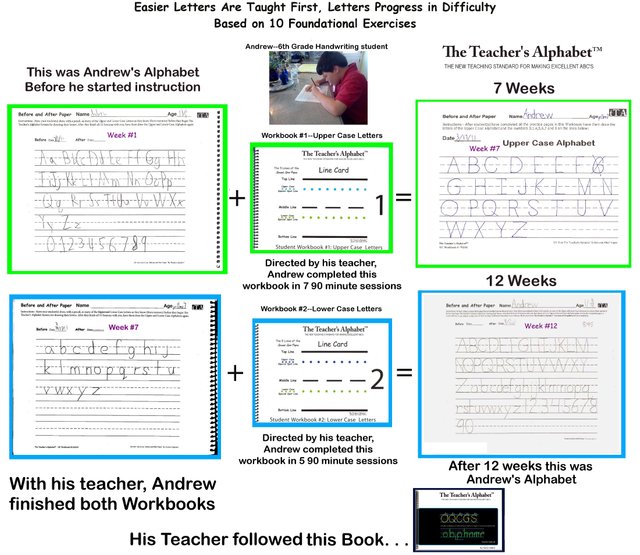Introducing Teaching Handwriting Smarter, Not Harder !

<><><> When Teaching Kids to Print, How Easy as A-B-C Isn't Even Close<><><><>
How “Practice makes Perfect” falls apart when teaching kids how to make their letters and numbers. Handwriting sheets that teach a child to make a capital A as their first letter are blatantly unfair. The opposing inclined left and right slant lines of a capital “A” require a skill level that is far beyond most children’s beginning skill set when first learning to print. By introducing the uppercase “B” next, with its complex set of directional cues and new shape control cues, children see no relatedness to the skills they just tried to master with the uppercase “A.” Since the letters are not directionally related, learning one letter does not reinforce their budding skills or build their confidence. If the “C” is introduced next, with its unique "under the top" start, most kids are justifiably confused and frustrated. As a result, most children get the idea that learning to print is a very difficult and frustrating process and they seek to avoid it because it is taught in such a confusing and unrelated way.
For the last hundred years, most teachers have blamed their students for “not trying hard enough” when presented with their poor printing skills.
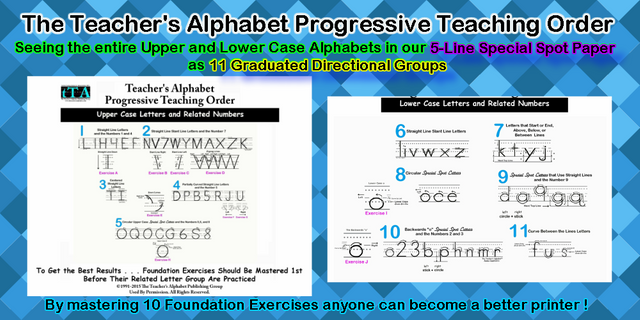
If we want children to be enthusiastic about literacy, shouldn't we give them a learning to print experience that is fair and respects their budding skills so they can embrace it and eagerly want to do more by succeeding at it?
Imagine solving this curriculum problem by providing a letter teaching system that builds skills and confidence by teaching the letters in progressive directional groups—from easiest to hardest –ensuring early mastery and more eager students. At this point, a frequent question is: "Why are the normal three lines – Top Line, Bottom-Line, and dashed Middle Line – not enough to teach beginning printers how to make their letters and numbers?" The answer is: Of the 52 upper and lower case letters, 21 do not start, or end, on these 3 lines.
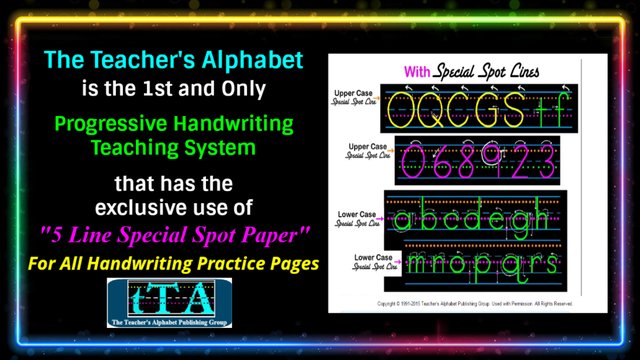
This makes their proper formation a matter of guesswork. In other words, the usual 3 lines don't help a child who is anxiously looking to master this very difficult task. In educational terms, these letters required the "skill of approximation," which is the ability to abstract the amount a letter is drawn above or below a line. Unfortunately, children don't develop this skill until they are 8 or 9.
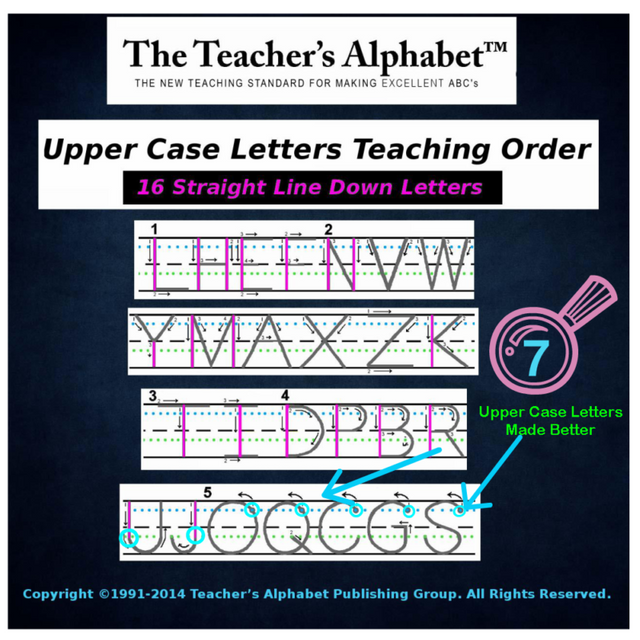
Pre-K and Kindergarten children are concrete thinkers – what they can see, feel, and touch they can learn.
The more a learning process involves skills they actually have, the more success they can enjoy. Figuring out fractional pieces of space, and consistently making their pencils go there, is rudely beyond their skill set.
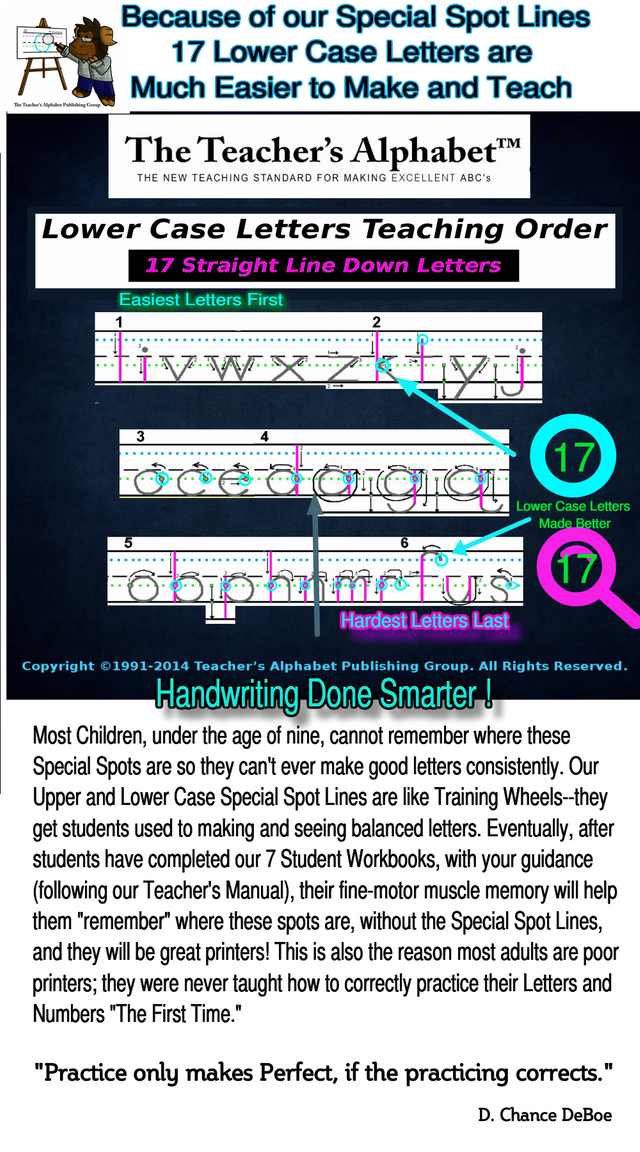
Show them a line where a letter starts and they can do that consistently. Tell them about a place that isn't marked and, unless they are artistically gifted (visual thinkers), they will not be able to find it reliably-- and that will frustrate them.
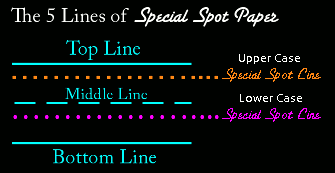
Or, as most adults will tell you, they make up their own place, and, if no one corrects them, they will have sloppy handwriting for the rest of their lives. Think about it for a moment. How would you show someone how to make a capital “O”? Would you tell them to place their pencil below the Top Line? If you don't, their “O” will look like an egg. We have found that over 26 of the 52 upper and lower case letters start and/or end between the usual 3 lines. Just look at all the adults who have still have sloppy handwriting, they all learned how to print as Kindergartners and first grades and they never got any better because the curriculum wasn't any better. Practice will not make you perfect, if you are practicing the wrong things over and over. By separating the necessary skills into 10 Foundation Exercises and teaching them progressively (easiest to hardest) through mastering 11 Directional Groups using a 5-Line paper instead of the usual 3--“no one will have to guess again where the curved letters start or end.” <
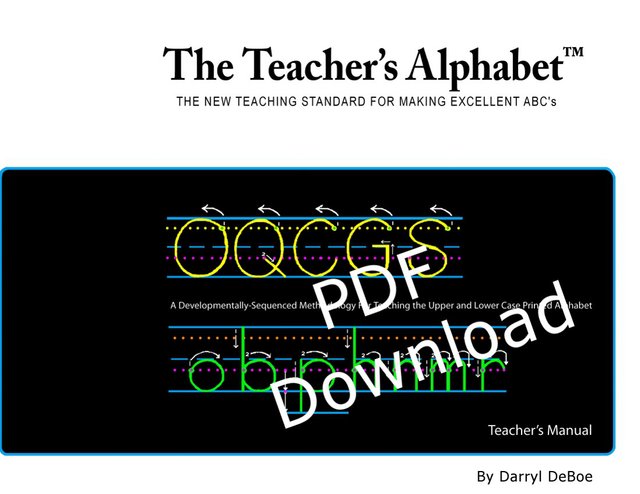
STEEMERS Come join us! Check us out!!

[The Teacher's Alphabet] (http://theteachersalphabet.com)
